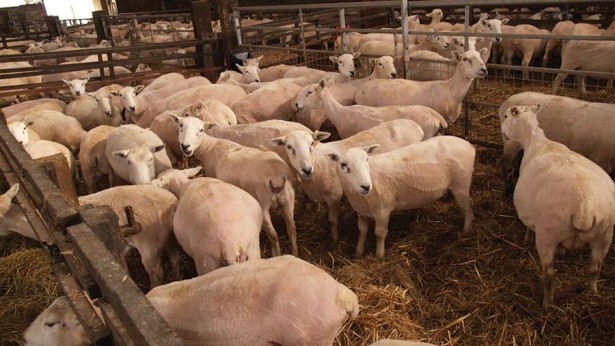Winter Housing and Shearing of Ewes
28 January 2020We have had an exceptionally open winter so far, where we have seen January temperatures in double figures in some parts of the country. Climate change is having an impact, which is bringing us higher winter temperatures, higher winter rainfall and less snow and frost. However, with this change, are we adapting our livestock systems?
Many now choose to house ewes post-Christmas, this is to prevent damage to the grass sward through, poaching during the winter. As well as allowing a 90 day rest period for the grass prior to lambing. Housed ewes typically have a full fleece, which is designed to insulate the sheep during winter. As well an insulation, wool can absorb and release moisture and is a natural regulator, helping the sheep to maintain a stable temperature. However, in mild conditions is there an opportunity to shear ewes at housing?
This shearing of ewes at housing offers many benefits such as,
- Reducing housing space with space requirements reducing by 25% in late pregnancy
- Easy to see which shorn ewes are bagging up and potential udder problems before lambing
- Shorn ewes eat more forage (10-15%) resulting in lambs being heavier at birth, increasing the chance of survival.
- Lambs can find the teat easier from shorn mothers and therefore suck quicker resulting in good early intakes of colostrum.
- The shorn ewe is clean underneath and at the back end reducing bacteria contamination when the lamb is searching for the teat.
If shearing ewes at housing there are some simple rules to follow. Ewes must be shorn at least, eight weeks before turnout to ensure suitable wool growth. Sheep must be dry for shearing, any thin sheep should remain unshorn, the shed/polytunnel must be drought free and well bedded. The forage available for shorn single bearing ewes should be limited to prevent lambing difficulties.
At turnout, good grass and shelter should be made available for the sheep. The shorn ewe will be more prone to seeking shelter for herself and her lambs than a non-shorn ewe. If the weather is poor, ewes udders must be checked routinely, with the fleece removed the udder can be very exposed to the extremes of the weather, which can lead to udder problems such as mastitis. It is vitally important the ewes are not turned out prior to eight week after being shorn, and suitable wool has grown.
Kirsten Williams, kirsten.williams@sac.co.uk
Sign up to the FAS newsletter
Receive updates on news, events and publications from Scotland’s Farm Advisory Service

